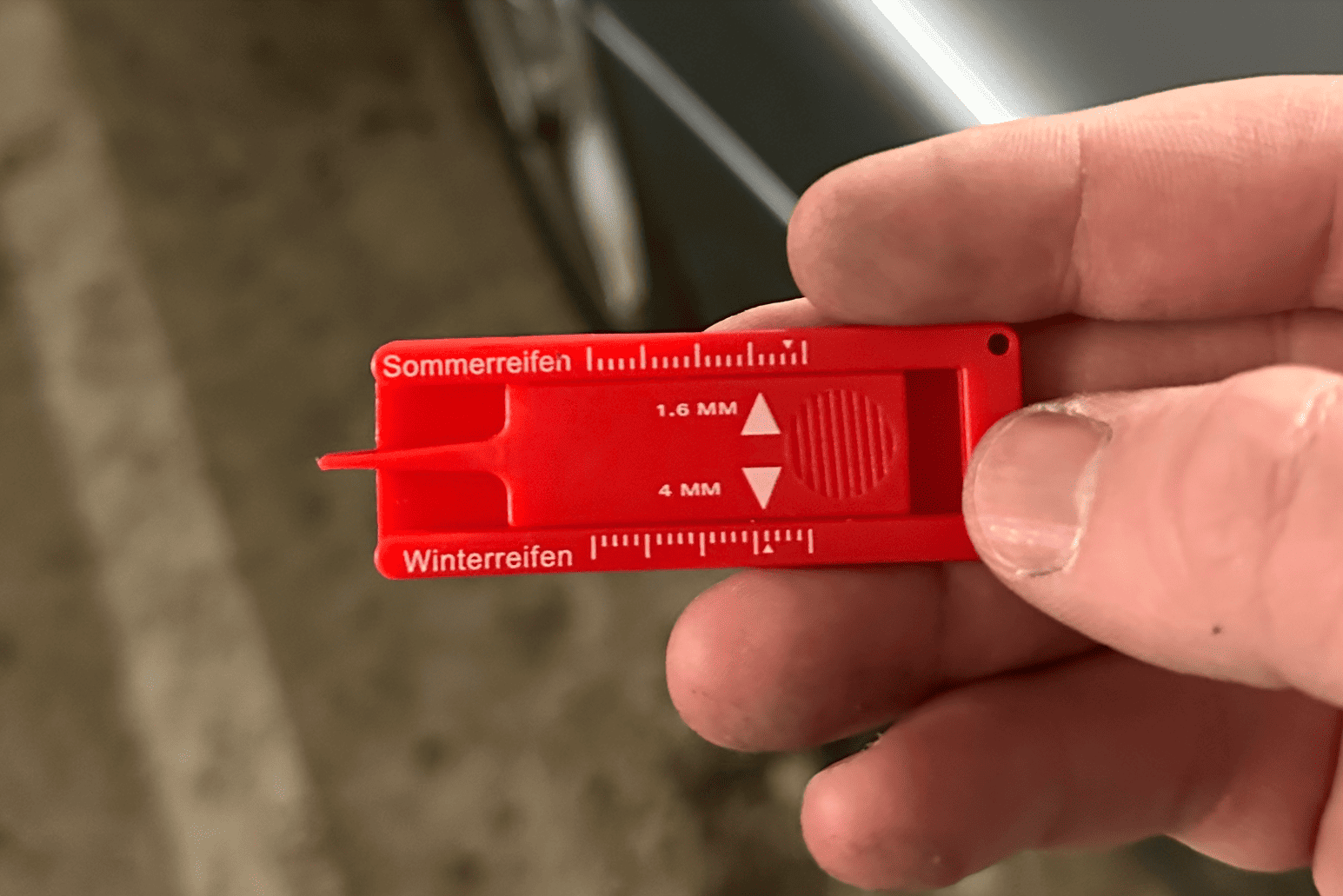
Tires are the only link between your car and the road, and their condition is critical to the safety and performance of your vehicle. In this article, we explain the minimum tread depths for winter, summer and all-season tires, give recommendations on when tires should be changed at the latest, and look at the special features of front and rear-wheel drive.
Minimum tread depth: legal requirements and recommendations
Summer tires
Summer tires are specially designed for warm temperatures and dry and wet road conditions. They offer optimum grip and stability at high temperatures.
- Legal minimum tread depth:** In most European countries, including Germany, the legal minimum tread depth is 1.6 millimeters.
- Recommended minimum tread depth:** However, experts recommend changing summer tires at a tread depth of 3 millimeters to ensure driving safety, optimum performance and short braking distances.
Winter tires
Winter tires are designed for cold temperatures, snow and ice. They have a special rubber compound and a deep tread pattern to provide good grip even in adverse conditions.
- Legal minimum tread depth:** A legal minimum tread depth of 1.6 millimeters also applies here.
- Recommended minimum tread depth:** To be safe on the road, experts recommend changing winter tires with a tread depth of 4 millimeters. With a lower tread depth, grip on snow and ice is significantly reduced.
All-season tires
All-season tires are a compromise between summer and winter tires. They offer sufficient grip in both moderate summer and winter conditions.
- Legal minimum tread depth:** The legal minimum tread depth of 1.6 millimeters also applies to all-season tires.
- Recommended minimum tread depth:** Experts recommend changing all-season tires at a tread depth of 3 to 4 millimeters, depending on the prevailing weather conditions where you live.
When should you change your tires?
In addition to tread depth, there are other factors that influence when you should change your tires:
- Tire age: Even if the tread depth is still sufficient, tires should be changed after 6 to 8 years at the latest. The rubber compound ages and loses its elasticity, which reduces grip.
- Irregular wear:** Regularly check the tire tread for irregular wear. This may indicate problems with the axle geometry or tire pressure.
- Damage:** Visible damage such as cracks, cuts or dents require immediate tire replacement.
How do I measure the tread depth of a tire?
Measuring the tread depth with a tread depth gauge is a simple but important process to ensure the safety and performance of your vehicle.
First, make sure that the tire is clean and that no large debris or foreign objects are obstructing the measurement. Take the tread depth gauge (affiliate link) and make sure it is working correctly. There are different models, some digital, some analog, but all have a scale to show the tread depth. I use this one, for example:

Insert the tread depth gauge into the deepest point of the tread groove of the tire. It is important to measure at several points on the tire to check for even wear. Press the measuring rod of the tread depth gauge to the bottom of the tread groove and read the value on the scale. On digital models, the value is shown on a display. Repeat the measurement at different points on the tire (e.g. inside, in the middle and outside) to ensure that the tire is evenly worn.
Then compare the measured values with the minimum tread depths recommended above. If the tread depth is below these values, the tire should be replaced.
[ad] Don't have a tread depth gauge yet? This is available for just a few euros via Amazon Prime and should not be missing in any glove compartment.
Special features for front and rear-wheel drive
Your car's drive system has a significant influence on tire wear:
- Front-wheel drive: In front-wheel drive vehicles, the front tires are subjected to greater stress, as they are responsible for both the drive and the steering. Therefore, the front tires wear out faster. It may be worth changing the tires regularly from front to rear to ensure more even wear.
- Rear-wheel drive:** In vehicles with rear-wheel drive, the rear tires are subjected to greater stress. Here, too, it is advisable to rotate the tires regularly in order to extend the service life of the tires.
Conclusion:
Checking your tires regularly and changing them in good time is essential for your safety and the reliability of your vehicle. Pay attention to the minimum tread depth, the age of the tires and possible damage. By rotating the tires on front or rear-wheel drive vehicles, you can ensure even wear and extend the service life of your tires. This will keep you safe and comfortable on the road at all times.
*All data and information are subject to regularly changing laws and are therefore without guarantee.
Diese Artikel könnten dich ebenfalls interessieren

Dein Wegweiser zur Kfz-Steuer - was du im Jahr 2024 wissen musst
Das Wichtigste zu dem Thema Kfz-Steuer und unser kostenloser Steuer-Rechner für Deutschland

Dein Auto wurde gestohlen? Was du nun unbedingt tun solltest!
Von der Diebstahlmeldung bis zur Abmeldung - Schritte und Tipps, wenn dein Auto gestohlen wurde.
Newsletter Anmeldung
Melde dich jetzt kostenlos zu unserem Newsletter an und verpasse nie mehr wichtige Informationen rund um dein Fahrzeug, die Zulassung und das Verkehrsrecht.
Mit der Anmeldung stimmst du unseren Datenschutz- und AGBs zu.